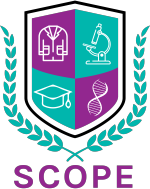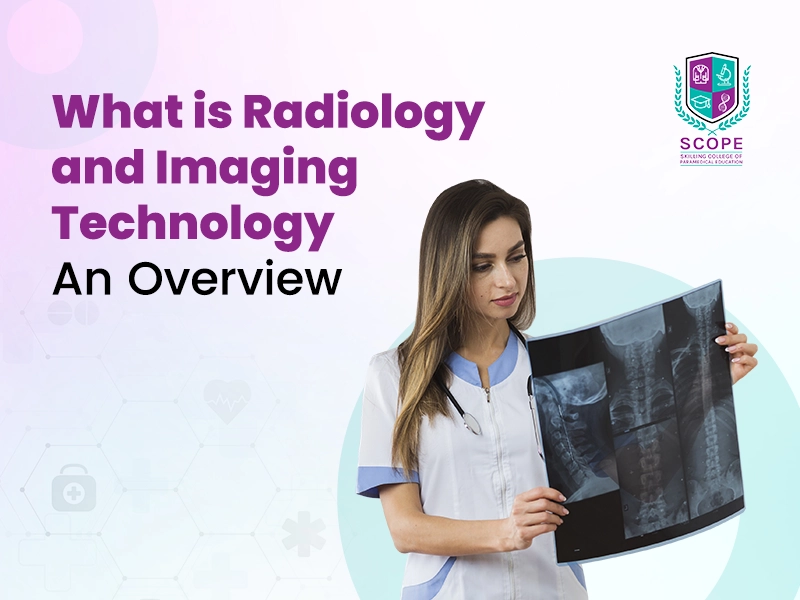Radiology and imaging technology are at the heart of modern medical diagnostics and treatments. With advancements in medical science, imaging technologies like X-rays, CT scans, MRIs, and ultrasounds have revolutionized patient care, enabling healthcare professionals to diagnose illnesses earlier and with greater precision. This growing field not only offers cutting-edge solutions for healthcare but also presents promising career opportunities for students looking to work in a dynamic medical environment.
If you are interested in building a future in this field, the Bachelor of Vocational (BVOC) in RMIT is a perfect choice to gain hands-on expertise and theoretical knowledge.
What is Radiology and Imaging Technology?
Radiology refers to the branch of medicine that uses imaging techniques to diagnose and monitor diseases, injuries, and internal abnormalities. It allows healthcare professionals to visualize organs, bones, tissues, and blood vessels without invasive procedures.
Key Imaging Techniques Include:
- X-Rays: Useful for detecting fractures and bone abnormalities.
- MRI (Magnetic Resonance Imaging): Effective for soft tissue imaging like brain and spinal issues.
- CT Scans: Provide detailed cross-sectional images of internal organs.
- Ultrasound: Primarily used for prenatal and organ imaging.
- PET Scans: Help identify cancer and monitor its progression.
These techniques are crucial for delivering accurate diagnoses and formulating effective treatment plans.
Applications of Radiology and Imaging Technology
Radiology plays a central role in several medical areas, making it indispensable in modern healthcare.
- Disease Diagnosis: Detects diseases like cancer, infections, and cardiovascular issues.
- Injury Assessment: Evaluate fractures, spinal injuries, and internal bleeding.
- Surgical Assistance: Provides visual guidance during surgeries.
- Monitoring Recovery: Tracks treatment progress in patients.
- Preventive Screening: Early detection of diseases such as breast cancer through mammography.
By enabling precise diagnostics, radiology ensures faster and more effective treatments, improving patient outcomes significantly.
Career Opportunities in Radiology and Imaging Technology
The demand for radiology and imaging professionals is rising globally. This field offers diverse roles with competitive salaries and growth opportunities.
Popular Career Roles Include:
- Radiology Technician
- MRI/CT Technologist
- Sonographer
- Medical Imaging Specialist
- Radiation Therapist
Areas of Employment:
- Government and Private Hospitals
- Medical Imaging Labs
- Radiography Centers
- Rehabilitation Clinics
Salary Range: INR 2,00,000 to 5,00,000 annually, depending on expertise and experience.
Why Pursue BVOC in Radiology and Imaging Technology?
The Bvoc RMIT is a career-focused program that bridges the gap between education and professional requirements. Unlike traditional degrees, BVOC programs integrate hands-on training with industry-relevant knowledge to make students job-ready.
Benefits of Bvoc RMIT:
- Industry-relevant curriculum designed for practical skills.
- Opportunity for real-world exposure through internships.
- High employability in the healthcare sector.
- Flexibility for working professionals with weekend batches.
If you are passionate about healthcare and technology, this program opens the door to a
Enroll Now – Start Your Journey in Radiology
SCOPE College’s BVOC in Radiology and Imaging Technology
SCOPE College offers a Government-Affiliated BVOC program in Radiology and Imaging Technology. Designed to meet industry demands, the course provides a perfect balance of theory, hands-on learning, and real-world exposure.
Key Highlights of the Program:
- Lab Facilities: Modern imaging equipment for practical training.
- 100% Job Placement: Placement assistance with top hospitals and imaging centers.
- Global and Local Placements: Prepare for opportunities across industries.
- Government Hospital Internships: Gain real-world experience through clinical training.
- Financial Aid Support: Scholarships and financial assistance are available.
- Flexible Learning: Weekend batches for degree students and working professionals.
- Blended Learning: Access to both online and offline sessions.
- Decade-Long Expertise: Over 10 years of delivering quality education and placements.
With its On-Job Training (OJT) focus and strong placement support, this program ensures that students graduate ready for the workforce.
For more details about the course, visit:
BVOC Radiology and Imaging Technology
Steps to Enroll in the Program
Follow these simple steps to kickstart your career:
- Visit the Course Page: BVOC Radiology and Imaging Technology.
- Register Online: Fill out the admission form here:
Enroll Now. - Contact for Queries: Need help? Reach out at:
Contact Us.
Don’t miss this opportunity to build a rewarding career in Bvoc RMIT.
Conclusion
Bvoc RMIT plays a pivotal role in healthcare, offering immense opportunities for growth and success. From advanced imaging tools to life-saving diagnoses, this field continues to evolve, creating a demand for skilled professionals.
The BVOC in RMIT program provides the perfect foundation to enter this thriving industry. With practical training, government hospital internships, and 100% job placement support, you gain the skills and knowledge required to excel.
Contact Us for More Information
Start your journey today and become part of the next generation of radiology professionals!
FAQs
What is radiology and imaging technology?
Radiology and imaging technology is a branch of medical science that focuses on using imaging techniques to diagnose and treat diseases. It includes technologies like X-rays, CT scans, MRI, ultrasound, and PET scans to visualize internal organs, bones, and tissues. These imaging methods help healthcare professionals detect abnormalities, monitor treatment progress, and provide precise medical care without invasive procedures.
What is the salary of BVoc RMIT per month in India?
The average monthly salary for a BVoc RMIT graduate in India ranges between ₹15,000 to ₹40,000. The salary depends on factors such as the individual’s skills, experience, location, and the type of healthcare organization they work for. Entry-level professionals typically earn around ₹15,000–₹20,000 per month, with opportunities for higher earnings as experience increases.
What is the highest-paid job in radiology?
The highest-paid jobs in radiology include specialized roles requiring advanced expertise and experience. Some of these positions are:
- Interventional Radiologist: They perform minimally invasive, image-guided procedures and earn the highest salaries in the field.
- Diagnostic Radiologist: Experts who analyze medical images for diagnosis and treatment planning.
- Radiology Consultants: Experienced professionals providing expert advice in radiology.
- Nuclear Medicine Physician: Specialize in using radioactive substances for diagnostics and treatment.
Interventional radiologists and senior consultants can earn salaries exceeding ₹30–50 lakhs annually in India, especially in reputed private hospitals.
Which radiology course is best?
The best radiology course depends on your career goals and prior education. Here are some top options:
- BVoc in RMIT: A career-oriented undergraduate program offering practical training and industry-focused skills.
- Certification in Radiology: A shorter program ideal for entry-level careers in radiography.
For students aiming to enter the field quickly with job-ready skills, the BVoc RMIT course is highly recommended due to its balance of practical training and employability.

